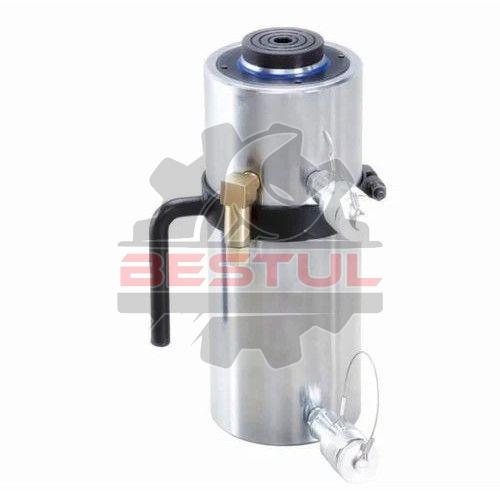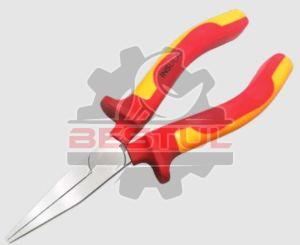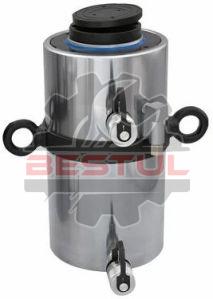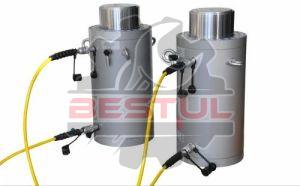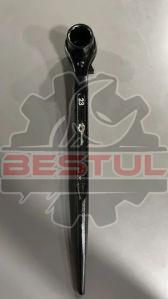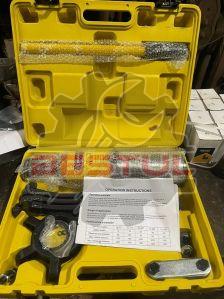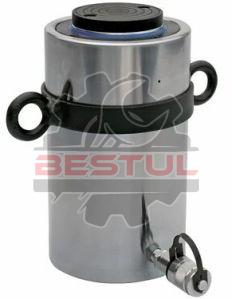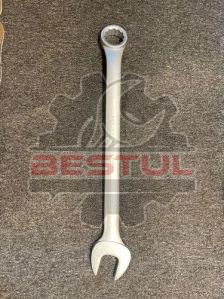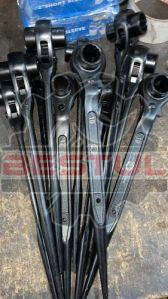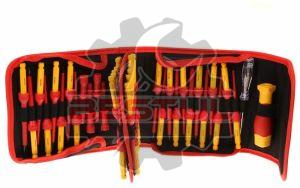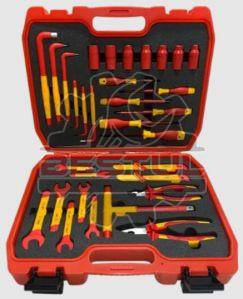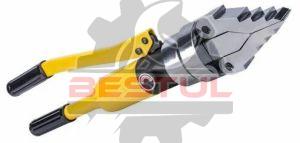999.00 / Piece
| Business Type | Exporter, Supplier |
| Capacity | 25 Ton |
| Usage/Application | Construction |
| Color | Silver |
| Click to view more | |
Product Details
Material
High-strength steel
Dimension
24" length, 4" diameter
I Deal In
New Only
Working Pressure
10,000 PSI
A Double-acting threaded ram jack is a powerful and versatile lifting tool often used in heavy-duty applications. Here’s a comprehensive guide to understanding its features, benefits, and considerations:
Features of a Double-Acting Threaded Ram Jack
-
Double-Acting Mechanism:
- Function: A double-acting hydraulic jack uses hydraulic pressure on both the upstroke and downstroke of the ram, allowing for faster and more efficient operation. This design helps in lifting and lowering the load more quickly compared to single-acting jacks.
- Advantages: Faster cycle times and more control over lifting and lowering, which is particularly useful in tasks that require frequent adjustments.
-
Threaded Ram:
- Design: The ram or piston in a threaded ram jack features a threaded shaft. This design allows for fine adjustments to the height of the lift by rotating the threaded ram.
- Precision: Provides more precise control over the lift height and can accommodate a variety of load sizes and shapes.
-
Hydraulic System:
- Operation: The hydraulic system amplifies the force applied through the pump to lift heavy loads. In double-acting jacks, both the up and down movements are controlled by hydraulic pressure.
- Fluid: Uses hydraulic fluid (usually oil) to transfer force. Regular maintenance and checks are necessary to ensure proper fluid levels and prevent leaks.
-
Construction:
- Material: Typically made from high-strength steel or other durable materials to handle heavy loads and withstand significant stress.
- Build Quality: Look for jacks with reinforced components and robust construction for better durability and safety.
-
Safety Features:
- Pressure Relief Valve: Prevents overloading by releasing excess pressure.
- Locking Mechanism: Some models have a locking feature to secure the ram in place at the desired height.
Applications
- Automotive: Ideal for lifting vehicles, especially in maintenance and repair operations.
- Construction: Useful for lifting and positioning heavy construction materials and equipment.
- Industrial: Common in factories and warehouses for heavy lifting and positioning tasks.
Operational Tips
-
Setup:
- Positioning: Ensure the jack is placed on a stable, level surface. The load should be centered and evenly distributed.
- Thread Adjustment: Before lifting, adjust the threaded ram to the desired position for a more controlled lift.
-
Lifting and Lowering:
- Pump Handle: Operate the pump handle smoothly to control the hydraulic pressure and raise or lower the load.
- Control: Double-acting jacks allow for more precise control during both lifting and lowering operations.
-
Inspection and Maintenance:
- Fluid Levels: Regularly check and maintain hydraulic fluid levels to ensure optimal performance.
- Inspection: Frequently inspect the ram, hydraulic system, and all moving parts for signs of wear or damage.
- Cleaning: Keep the jack clean to prevent debris from affecting its operation.
-
Safety Precautions:
- Training: Ensure that operators are trained in using the hydraulic jack safely and effectively.
- Protective Gear: Wear appropriate safety gear, such as gloves and safety glasses.
- Emergency Procedures: Have procedures in place for dealing with hydraulic failures or accidents.
Looking for "Double Acting Threaded Ram Jack" ?
Piece

